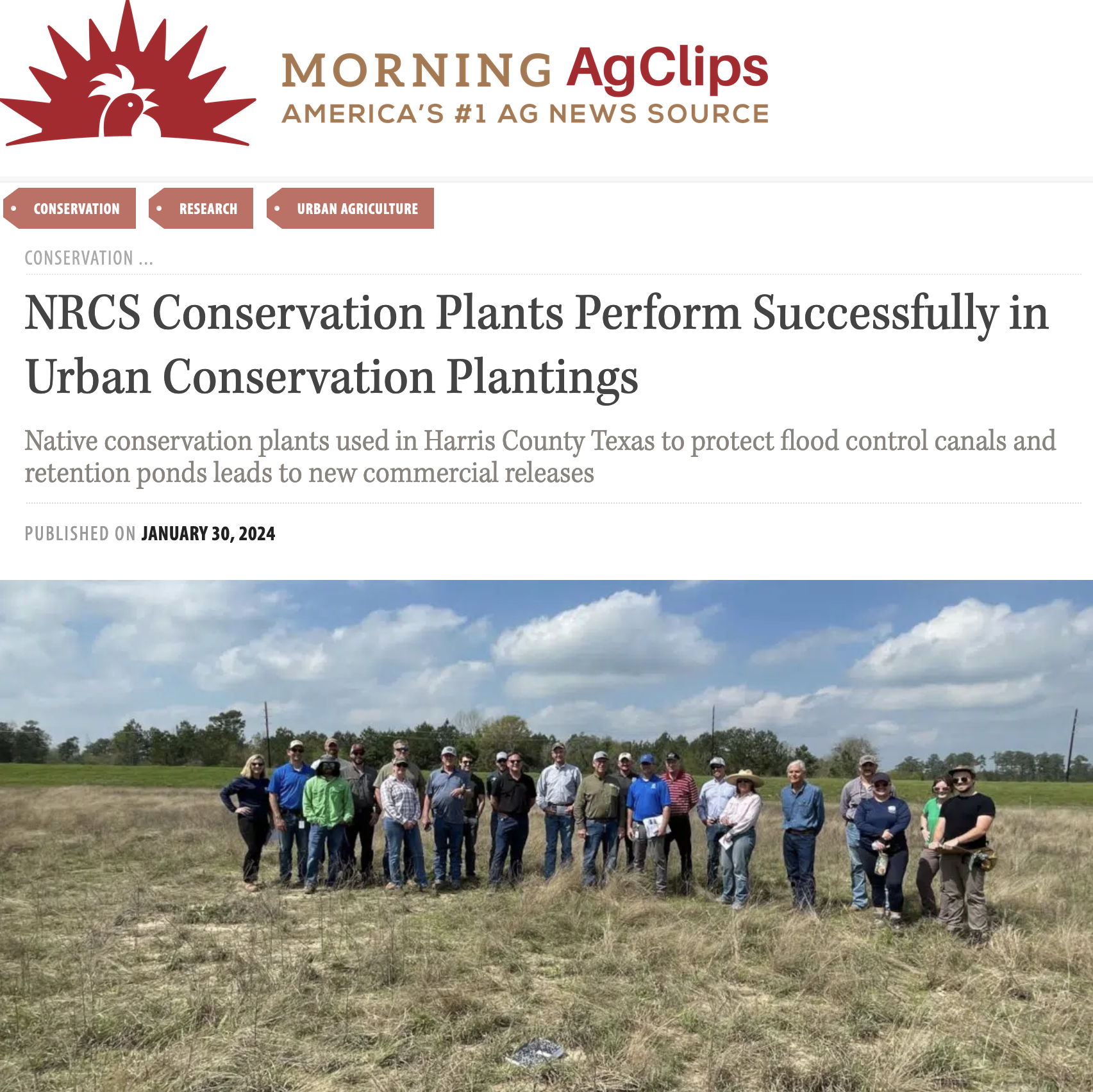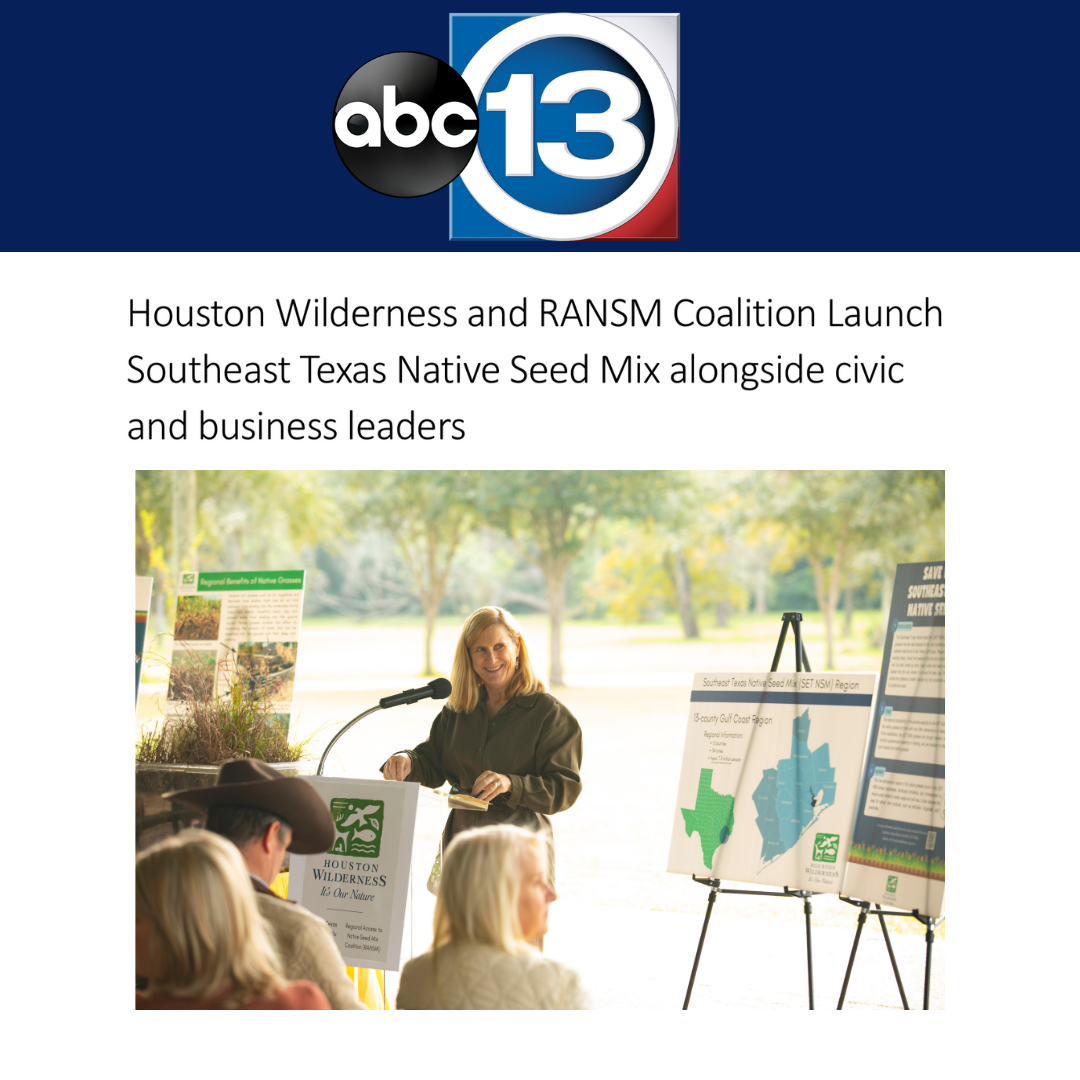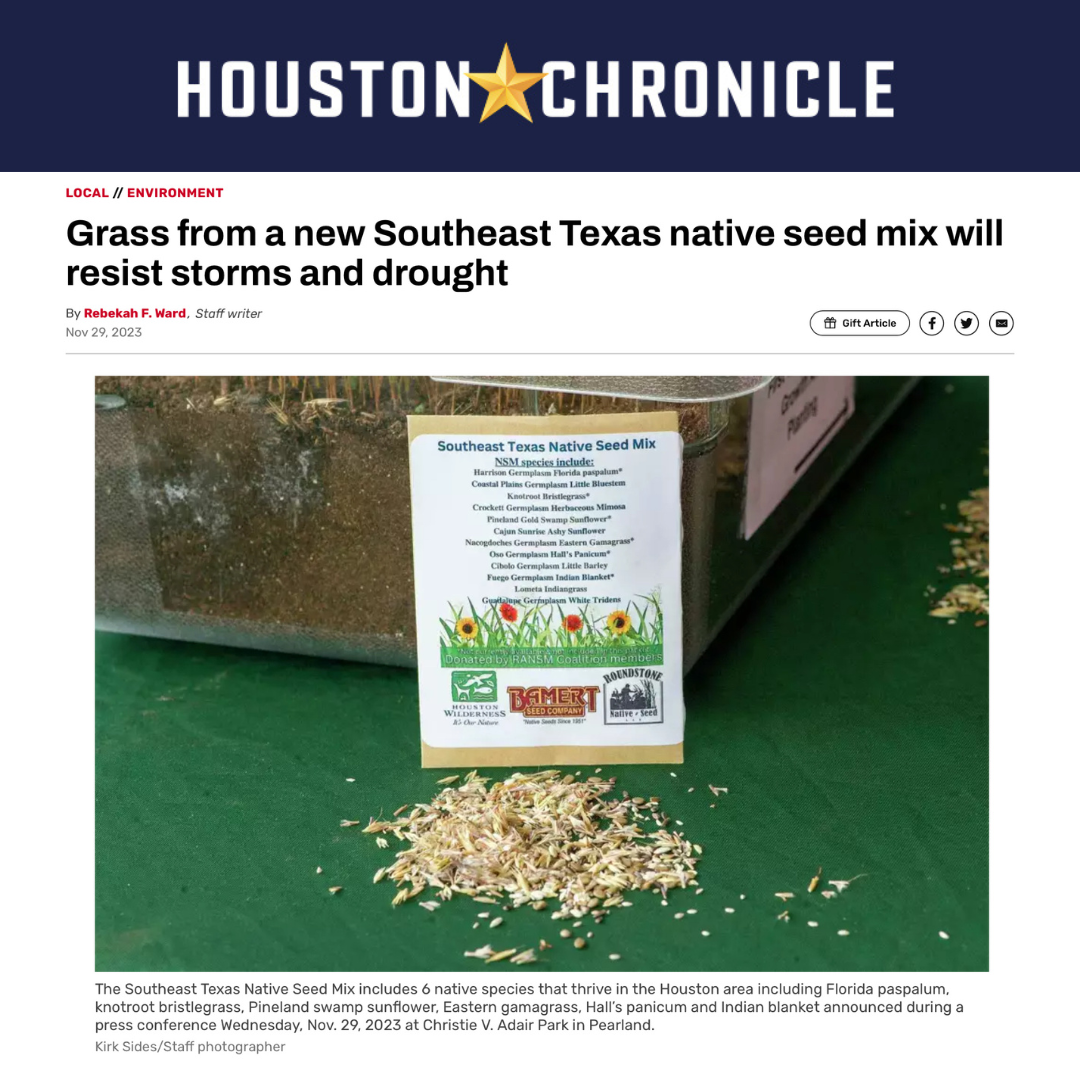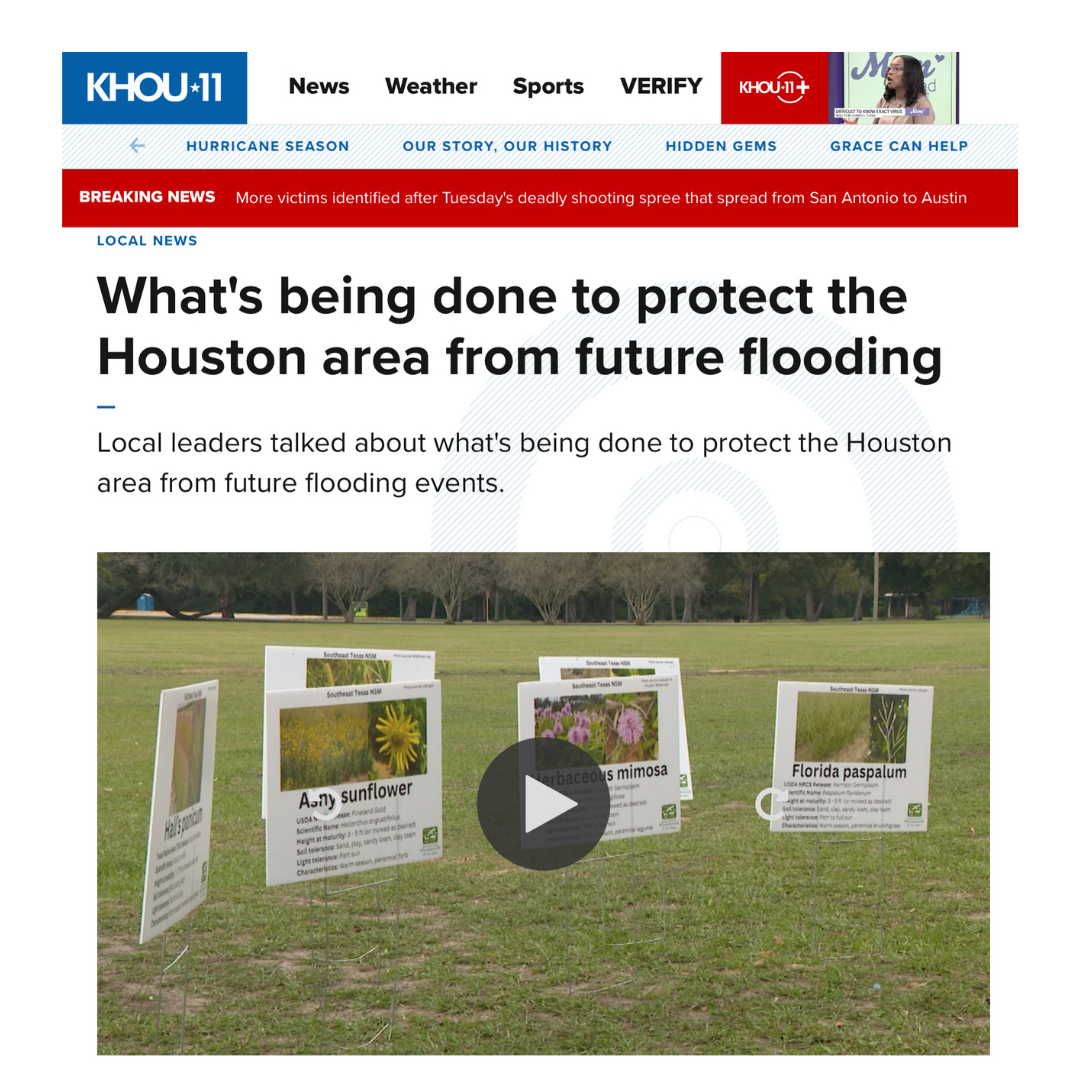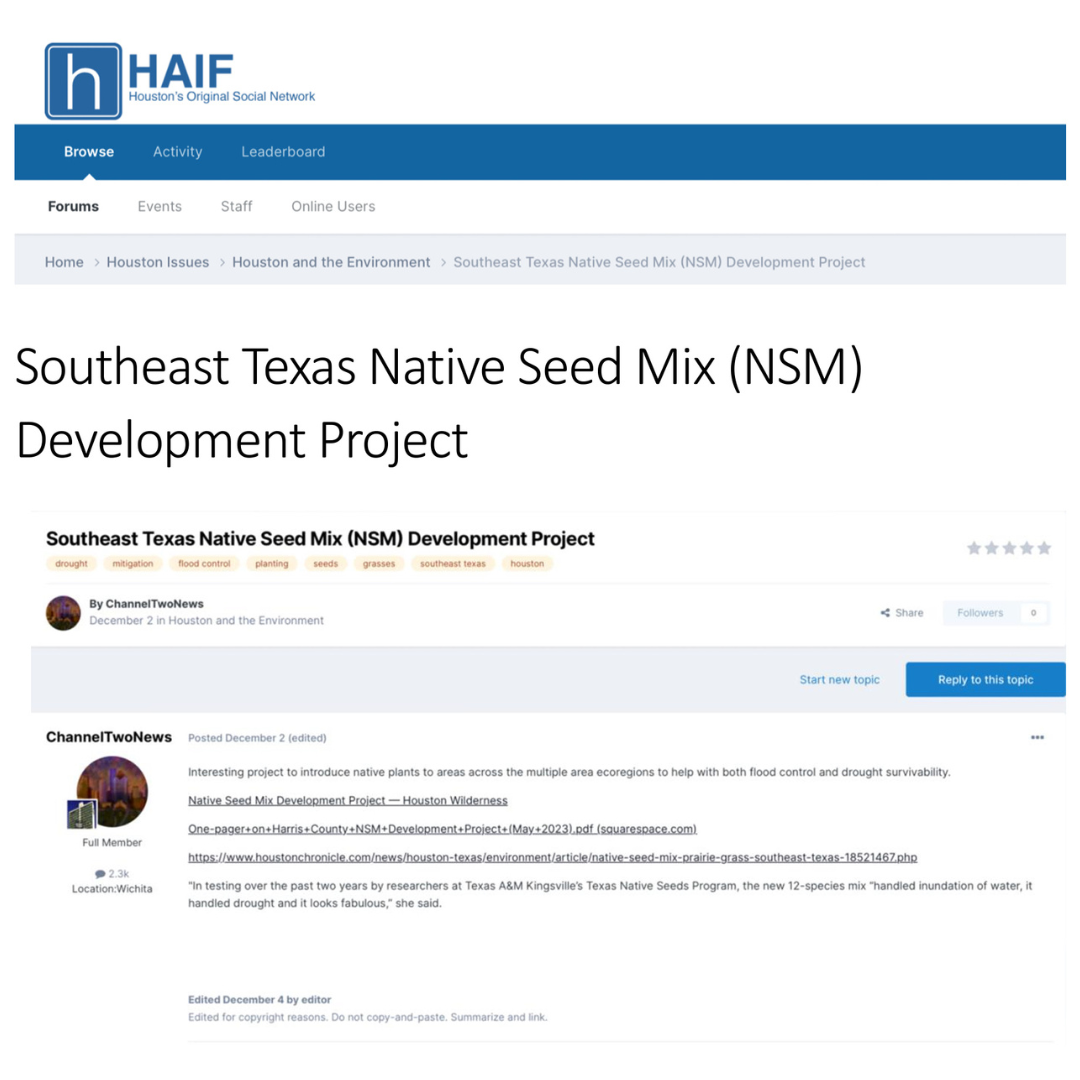BAYOU WILDERNESS
ABOUT THE BAYOU WILDERNESS
Wild and winding ribbons of water weave their way across landscapes, through neighborhoods, passing skyscrapers. Black-crowned Night Herons hunt for Crawfish, undisturbed as motorists fly past.
Those taking up urban residence within the Houston Wilderness area are not just human. Between the asphalt and concrete, around the shopping malls and medical centers, the bayous, lakes, prairies and forests are host or home to many wild neighbors. Every evening at sunset, more than 250,000 Mexican Free-tailed Bats emerge from crevices found in the Waugh Drive Bridge. A large portion of the bat colony remains through the winter months, providing viewing opportunities on warm nights.
These bayous within our communities not only provide opportunities to enjoy the outdoors, but they are also habitat to many species. Our wild neighbors eat tons of mosquitoes and other noxious insects. They pollinate flowers and crops and help maintain the health of our parks and communities. The habitat these various species call home helps mitigate damage from floods and recharge underground water supplies. And, it provides humans a respite from the concrete jungle. Enjoy the hiking and canoe trails of the Bayou Wilderness: they are an excellent way to meet some of your wild neighbors!
Visitors can bike, bird-watch, camp, hike, boat, fish and more in the ecoregion.
To read more about Bayou Wilderness, download our atlas!
BAYOU WILDERNESS SITES
Houston Arboreturm and Nature CEnter
Jesse H. Jones Park & Nature CEnter
Bellaire Nature Discovery Center
Sims Bayou Urban Nature Center
Shangri La Botanical Gardens and Nature Center
Mercer Arboretum and Botanic Gardens
Download Houston Wilderness' List of Ecoregion Sites for information on sites in all 10 ecoregions.
TOP 10 FACTS ABOUT...
THE BAYOU WILDERNESS
1) Houston’s moniker, the Bayou City, is well deserved – it is crisscrossed by waterways of all types, including rivers, bayous and creeks.
2) Harris County and Houston are bisected by Buffalo Bayou, which rises in the Katy prairie west of the city and flows east through the Memorial area – right through downtown, it’s course eventually becoming the deepwater Houston Ship Channel.
3) The soil order in the Bayou Wilderness is vertisols.
4) Other important bayous in the Houston area include White Oak Bayou, which flows from northwest Harris County to the Heights; Hunting Bayou, a small waterway entering the Houston Ship Channel near East Loop 610; Greens Bayou, which flows eastward toward Beltway 8 and then turns south; and Brays Bayou, flowing southwest through the Houston Medical Center.
5) When big rain storms hit the area, the bayous and creeks simply rise out of their banks and spread out to cover whatever land is necessary to accommodate the water. These areas are called floodplains.
6) As Houston grew and developed, some structures were built close to the water for trade and aesthetic purposes causing those structures to flood frequently. As a result, many bayous were modified and their biological diversity was nearly eliminated. Few natural bayous remain.
7) The Houston Arboretum is an excellent place to experience the natural bayou via their trail system through the floodplain forest on Buffalo Bayou.
8) The arboretum boasts over 165 species of birds, 31 species of mammals, 13 amphibians and 22 varieties of fish.
9) Development of the floodplains and prairies has caused the city to reevaluate its flood prevention plans and focus on the preservation of our natural bayou systems.
10) On a canoeing trip down Buffalo Bayou it is easy to forget that you are in the fourth-largest city in the US. That is, until you pass under the Shepherd bridge and see skyscrapers mingle with natural vistas, marrying civilization and biodiversity.
Banner Photo by Cliff Meinhardt





